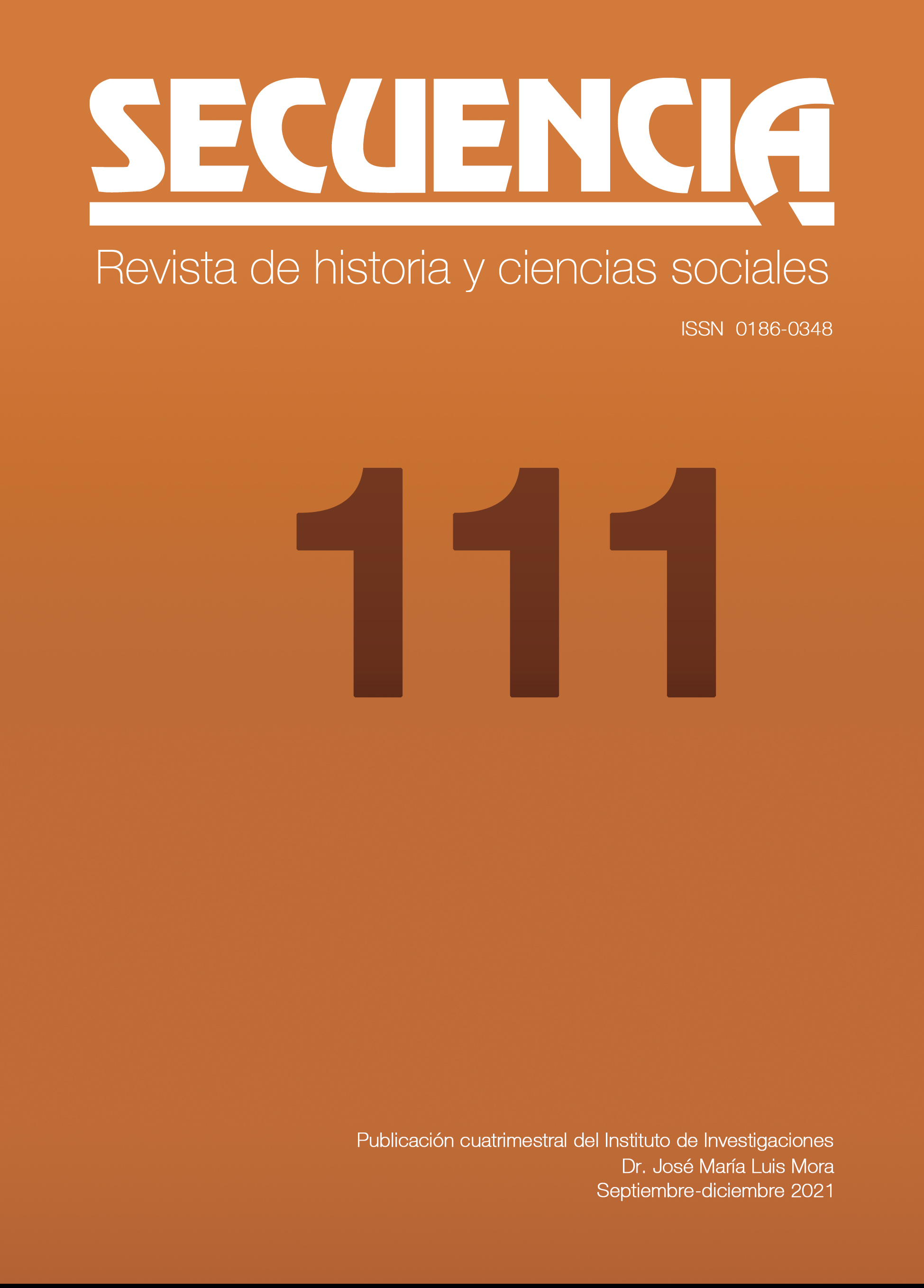Abstract
The industrial sector is one of the largest energy consumers worldwide and therefore, one of the most polluting. Using energy efficiency (EE) measures in this sector therefore provides broad economic and environmental benefits. In this context, the article examines the degree of implementation of ee measures in a sample of companies located in the Monterrey Metropolitan Area, in Nuevo Leon, Mexico. Its main contribution is a diagnosis that could be useful for designing and implementing state EE programs and actions. The results show that large and medium-sized companies are those that most identify and implement EE measures, focusing their efforts on staff training. The main barriers faced by the companies surveyed are information and financing, particularly in the case of small companies.
References
AMENEER [Asociación Mexicana de Empresas de Eficiencia Energética] (2017). ¿Por qué ahorrar energía? Mercado de eficiencia energética en México. Recuperado de http://ameneer.org.mx/porque-ahorrar-energia/
Bouille, D. (1999). Lineamientos para la regulación del uso eficiente de la energía en Argentina. Proyecto CEPAL/Comisión Europea “Promoción del uso eficiente de la energía en América Latina”. (Serie Medio Ambiente y Desarrollo 16). Recuperado de https://www.cepal.org/es/publicaciones/5701-lineamientos-laregulacion-uso-eficiente-la-energia-argentina
Bouille D., Carpio C., Di Sbroiavacca N., Dubrovsky H., Nadal G., Lallana F., Landaveri R., Pistonesi H., Plauchú J., Recalde M. y Soria R. (2018). Propuestas de instrumentos para facilitar medidas de eficiencia energética en el sector industrial de México. Fundación Bariloche. Recuperado de https://www.gob.mx/cms/uploads/attachment/file/400188/HojaRuta_EE_DIGITAL_.pdf
Cámara de Diputados del H. Congreso de la Unión (2008). Ley para el aprovechamiento sustentable de la energía. Nueva ley. DOF, 28 de noviembre de 2008. Recuperado de https://www.senado.gob.mx/comisiones/energia/docs/marco_LASE.pdf
CEPAL [Comisión Económica para América Latina y el Caribe] (1999). Las barreras medioambientales a las exportaciones latinoamericanas de camarón. Unidad de comercio internacional. Recuperado de https://www.cepal.org/es/publicaciones/4326-barreras-medioambientales-exportaciones-latinoamericanas-camarones
CONUEE [Comisión Nacional para el Uso Eficiente de la Energía] (2018). Micro, pequeña y mediana empresa 2018. Recuperado de https://www.gob.mx/conuee/acciones-y-programas/micro-pequena-y-mediana-empresa-2018 [consulta: 10 de febrero de 2020].
CONUEE [Comisión Nacional para el Uso Eficiente de la Energía] (2019). Hoy día, la eficiencia energética en México contribuye más a la mitigación del cambio climático que las energías renovables. Recuperado de https://www.gob.mx/conuee/articulos/hoy-dia-la-eficiencia-energetica-en-mexico-contribuye-mas-a-la-mitigacion-del-cambio-climatico-que-las-energias-renovables
Fawkes, S., Oung, K., Thorpe, D. (2016) Best practices and case studies for industrial energy efficiency improvement – An introduction for policy makers. Copenhagen: UNEP DTU Partnership. Recuperado de https://orbit.dtu.dk/files/127152472/Best_Practises_for_Industrial_EE_web_1_.pdf
Fischedick M., Roy, J., Abdel-Aziz, A., Acquaye, A., Allwood, J. M., Ceron, J.-P., Geng, Y., Kheshgi, H., Lanza, A., Perczyk, D., Price, L., Santalla, E., Sheinbaum, C. y Tanaka, K. (2014) Industry. En O. Edenhofer, R. Pichs-Madruga, Y. Sokona, E. Farahani, S. Kadner, K. Seyboth, A. Adler, I. Baum, S. Brunner, P. Eickemeier, B. Kriemann, J. Savolainen, S. Schlömer, C. von Stechow, T. Zwickel y J. C. Minx (eds.), Climate change 2014: Mitigation of climate change. Contribution of working group III to the fifth assessment report of the intergovernmental panel on climate change. Cambridge, United Kingdom: Cambridge University Press.
Golubchikov, O. y Deda, P. (2012). Governance, technology, and equity: An integrated policy framework for energy efficient housing. Energy Policy, 41, 733-741. DOI: https://doi.org/10.1016/j.enpol.2011.11.039
González, D. y Martínez, M. (2012). Changes in CO2 emission intensities in the Mexican industry. Energy Policy, 51, 149-163. DOI: http://dx.doi.org/10.1016/j.enpol.2012.08.058
Herrera, B., Amell, A., Chejne, F., Cacua, K., Manrique, R., Henao, W. y Vallejo, G. (2017). Use of thermal energy and analysis of barriers to the implementation of thermal efficiency measures in cement production: Exploratory study in Colombia. Energy, 140, 1047-1058. DOI: https://doi.org/10.1016/j.energy.2017.09.041
IEA [International Energy Agency] (2012). Energy management programmes for industry. Paris, France. Recuperado de https://webstore.iea.org/policy-pathway-energy-management-programmes-for-industry
IEA [International Energy Agency] (2020a). Diagrama de Sankey de la Agencia Internacional de Energía. Recuperado de https://www.iea.org/sankey/
IEA [Inernational Energy Agency] (2020b). Data and statistics. Recuperado de https://www.iea.org/data-and-statistics?country=WORLD&fuel=CO2%20emissions&indicator=CO2%20emissions%20by%20sector
IEA [Inernational Energy Agency] (2021). Tracking Industry 2020. Recuperado de https://www.iea.org/reports/tracking-industry-2020 [consulta: 24 de agosto de 2021].
INEGI [Instituto Nacional de Estadística y Geografía] (2016). Estructura económica de Nuevo León en síntesis. Recuperado de http://internet.contenidos.inegi.org.mx/contenidos/Productos/prod_serv/contenidos/espanol/bvinegi/productos/nueva_estruc/702825090029.pdf
INEGI [Instituto Nacional de Estadística y Geografía] (2009). Micro, pequeña, mediana y gran empresa. Recuperado de https://www.inegi.org.mx/contenidos/programas/ce/2009/doc/minimonografias/m_pymes.pdf
IENGI. Directorio Estadístico Nacional de Unidades Económicas (DENUE). Recuperado de https://www.inegi.org.mx/app/mapa/denue/ (Consultado el 19 de febrero del 2020)
Levy, P. y Lemeshow, S. (2008). Sampling of populations: Methods and applications. Wiley: New Jersey.
Makridou, G., Andriosopoulos, K., Doumpos, M., y Zopounidis, C. (2016). Measuring the efficiency of energy-intensive industries across European countries. Energy Policy, 88, 573-583. DOI: http://dx.doi.org/10.1016/j.enpol.2015.06.042
Munguia, N., Vargas-Betancourt, N., Esquer, J., Giannetti, B. F., Liu, G., y Velazquez, L. E. (2018). Driving competitive advantage through energy efficiency in Mexican maquiladoras. Journal of Cleaner Production, 172, 3379-3386. DOI: https://doi.org/10.1016/j.jclepro.2017.11.253
Nordelo, C. A. B., Pérez, M. M., Felipe, C. P. V., Delgado, N. O. y Soldatti, M. E. (2014). Barreras y factores claves para promover la eficiencia energética en la industria. Universidad y Sociedad, 6(2). Recuperado de https://rus.ucf.edu.cu/index.php/rus/article/download/158/155
Nouri, J., Lotfi, F. H., Borgheipour, H., Atabi, F., Sadeghzadeh, S. M. y Moghaddas, Z. (2013). An analysis of the implementation of energy efficiency measures in the vegetable oil industry of Iran: a data envelopment analysis approach. Journal of Cleaner Production, 52, 84-93. DOI: http://dx.doi.org/10.1016/j.jclepro.2013.02.021
Ozawa, L., Sheinbaum, C., Martin, N., Worrell, E. y Price, L. (2002). Energy use and CO2 emissions in Mexico’s iron and steel industry. Energy, 27(3), 225-239.
OECD, IEA y AFD [Organización para la Cooperación y el Desarrollo Económicos, International Energy Agency, Agence Française de Développement] (2008). Promoting energy efficiency investment Case studies in the residential sector. Autor.
Qi, X., Guo, P., Guo, Y., Liu, X. y Zhou, X. (2020). Understanding energy efficiency and its drivers: An empirical analysis of China’s 14 coal intensive industries. Energy, 190, 116-354. DOI: https://doi.org/10.1016/j.energy.2019.116354
Ramírez, D. M. y Luyando, J. R. (2014). Análisis del consumo de energía eléctrica residencial en el Área Metropolitana de Monterrey, NL, México. Estudios Económicos, 31(62), 27-47.
Rohdin, P., Thollander, P. y Solding, P. (2007). Barriers to and drivers for energy efficiency in the Swedish foundry industry. Energy Policy, 35(1), 672-677. DOI: http://doi:10.1016/j.enpol.2006.01.010
Ruchansky, B., Januzzi, G., Buen, O. D. y Romero, A. (2011). Eficacia institucional de los programas nacionales de eficiencia energética: los casos de Brasil, Chile, México y el Uruguay. CEPAL: Santiago de Chile.
Secretaría de Economía y Trabajo (2019). Data Nuevo León: Indicadores oportunos. Recuperado de http://datos.nl.gob.mx/ [consulta: 21 de febrero de 2020].
SENER [Secretaría de Energía] y Banco Mundial (2019). Evaluación rápida del uso de la energía, Monterrey, Nuevo León, México. Recuperado de https://www.gob.mx/cms/uploads/attachment/file/171266/21__Monterrey.pdf
SENER y CONUEE [Secretaría de Energía y Comisión Nacional para el Uso Eficiente de la Energía] (2017). Normas oficiales mexicanas de eficiencia energética. Balance al 2017. Recuperado de https://www.gob.mx/cms/uploads/attachment/file/445141/NOM-ENER____Balance_2017_V_octubre_2018.pdf
SENER y CONUEE [Secretaría de Energía y Comisión Nacional para el Uso Eficiente de la Energía] (2019a). Segundo reporte de evaluación sobre los Acuerdos Voluntarios 2019. Recuperado de https://www.gob.mx/cms/uploads/attachment/file/481355/Segundo_Reporte_AVEE_2019_29Julio2019_minima_1_.pdf
SENER y CONUEE [Secretaría de Energía y Comisión Nacional para el Uso Eficiente de la Energía] (2019b). Programa Nacional para Sistemas de Gestión de la Energía 2013-2018. Ciudad de México. Recuperado de https://www.gob.mx/cms/uploads/attachment/file/457626/Informe_PRONASGEn_Final_30042019.pdf
SIEMENS (2010). Estudios de servicios energéticos en el sector terciario. Recuperado de https://www.fenercom.com/wp-content/uploads/2019/10/2010-02-17-Estudios-de-Servicios-Energeticos-en-el-Sector-Terciario-fenercom.pdf [consulta. 2 de febrero de 2020].
Sheinbaum, C., Ozawa, L. y Castillo, D. (2010). Using logarithmic mean Divisia index to analyze changes in energy use and carbon dioxide emissions in Mexico’s iron and steel industry. Energy Economics, 32(6), 1337-1344. DOI: http://doi:10.1016/j.eneco.2010.02.011
Sheinbaum-Pardo, C., Mora-Pérez, S. y Robles-Morales, G. (2012). Decomposition of energy consumption and CO2 emissions in Mexican manufacturing industries: Trends between 1990 and 2008. Energy for Sustainable Development, 16(1), 57-67. DOI: https://doi:10.1016/j.esd.2011.08.003
Sola, A. V. y Mota, C. M. (2020). Influencing factors on energy management in industries. Journal of Cleaner Production, 248, 119263. DOI: https://doi.org/10.1016/j.jclepro.2019.119263
Subsecretaria de Energías Renovables y Eficiencia Energética (2019). Reporte energético preliminar. Secretaria de Energía, Argentina. Recuperado de https://bneu.eficienciaenergetica.net.ar/Reporte_Energetico_Preliminar_190927.pdf
Tanaka, K. (2011). Review of policies and measures for energy eficiency in industry sector. Energy Policy, 39, 6532-6550. DOI: https://doi.org/10.1016/j.enpol.2011.07.058
Thollander, P., Backlund, S., Trianni, A. y Cagno, E. (2013). Beyond barriers –A case study on driving forces for improved energy efficiency in the foundry industries in Finland, France, Germany, Italy, Poland, Spain, and Sweden. Applied Energy, 111, 636-643. DOI: http://dx.doi.org/10.1016/j.apenergy.2013.05.036
Timilsina, G. R., Hochman, G. y Fedets, I. (2016). Understanding energy efficiency barriers in Ukraine: Insights from a survey of commercial and industrial firms. Energy, 106, 203-211. DOI: http://dx.doi.org/10.1016/j.energy.2016.03.009
Wang, J., Yang, F., Zhang, X. y Zhou, Q. (2018). Barriers and drivers for enterprise energy efficiency: An exploratory study for industrial transfer in the Beijing-Tianjin-Hebei region. Journal of Cleaner Production, 200, 866-879. DOI: https://doi.org/10.1016/j.jclepro.2018.07.327
Xue, X., Wu, H., Zhang, X., Dai, J. y Su, C. (2015). Measuring energy consumption efficiency of the construction industry: the case of China. Journal of Cleaner Production, 107, 509-515. DOI: http://dx.doi.org/10.1016/j.jclepro.2014.04.082
Zhou, Z., Xu, G., Wang, C. y Wu, J. (2019). Modeling undesirable output with a DEA approach based on an exponential transformation: An application to measure the energy efficiency of Chinese industry. Journal of Cleaner Production, 236, 117717. DOI: https://doi.org/10.1016/j.jclepro.2019.117717
Zuberi, M. J. S., Santoro, M., Eberle, A., Bhadbhade, N., Sulzer, S., Wellig, B. y Patel, M. K. (2020). A detailed review on current status of energy efficiency improvement in the Swiss industry sector. Energy Policy, 137, 111162. DOI: https://doi.org/10.1016/j.enpol.2019.111162
Aquellos autores/as que tengan publicaciones con esta revista, aceptan los términos siguientes:
- Los autores/as conservarán sus derechos de autor y garantizarán a la revista el derecho de primera publicación de su obra, el cuál estará simultáneamente sujeto a la Licencia de reconocimiento de Creative Commons Atribución-NoComercial 4.0 Internacional que permite a terceros compartir la obra siempre que se indique su autor y su primera publicación esta revista.
- Los autores/as podrán adoptar otros acuerdos de licencia no exclusiva de distribución de la versión de la obra publicada (p. ej.: depositarla en un archivo telemático institucional o publicarla en un volumen monográfico) siempre que se indique la publicación inicial en esta revista.
- Se permite y recomienda a los autores/as difundir su obra a través de Internet (p. ej.: en archivos telemáticos institucionales o en su página web) antes y durante el proceso de envío, lo cual puede producir intercambios interesantes y aumentar las citas de la obra publicada. (Véase El efecto del acceso abierto).




